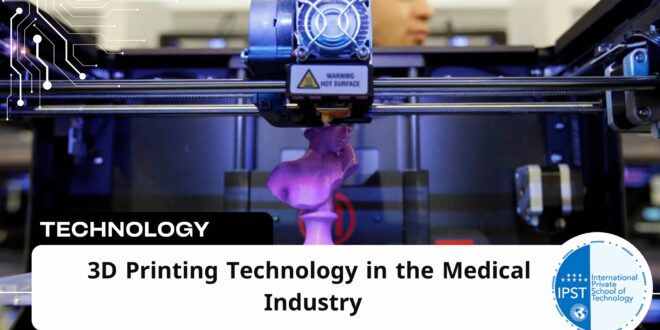3D printing technology in the medical industry has emerged as one of the most transformative advancements in healthcare. By creating custom medical devices, surgical tools, and even tissues and organs, this technology is revolutionizing how medical professionals provide care. 3D printing allows for highly personalized solutions, enabling medical devices and prosthetics that are tailored to meet the specific needs of individual patients. This has significantly improved the effectiveness of treatments and reduced the risks associated with surgery.
Applications of 3D Printing Technology in the Medical Industry
- Prosthetics Manufacturing:
3D printing in the medical industry allows for the production of prosthetic limbs that are tailored to fit the precise measurements of a patient’s body. This provides better comfort, functionality, and enhanced mobility, compared to traditional prosthetics. Companies like Limbitless Solutions are already using this technology to create affordable, customizable prosthetics for children. - Tissue and Organ Printing:
3D printing is also paving the way for breakthroughs in tissue and organ printing. Researchers are working on techniques to create human tissues and organs, which could revolutionize organ transplantation. The ability to print functional organs will address the global shortage of organ donors and improve transplant success rates. - Surgical Tool Manufacturing:
Surgeons can now utilize custom-made surgical tools created through 3D printing, which are specifically designed for their procedures. This improves the precision of surgeries, reducing complications, and shortening recovery times. For example, 3D-printed surgical guides are being used to assist in complex spinal surgeries, ensuring greater accuracy. - Medical Education and Training:
3D printing technology has also proven beneficial in medical education. By creating lifelike models of organs, bones, and tissues, doctors and medical students can practice and refine their surgical techniques. This hands-on training increases preparedness for real-life procedures and can contribute to better patient outcomes.
The Future of 3D Printing in the Medical Industry
The future of 3D printing technology in medicine looks incredibly promising. We can expect to see continued advancements in printing human tissues and organs at the cellular level, potentially leading to the ability to print fully functional organs. This would dramatically reduce the need for organ donors and enhance the speed and effectiveness of treatments. Additionally, as the technology becomes more accessible and affordable, it’s likely that 3D printing will become an integral part of medical practices worldwide.
Source : http://MedContx



